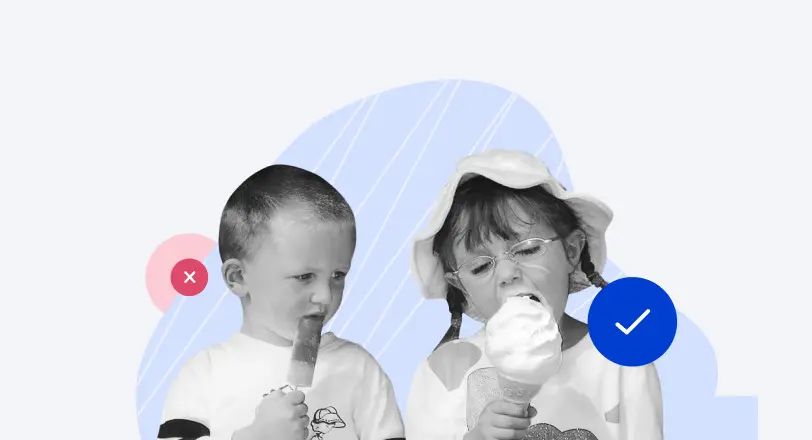The Best LMS Platforms for Language Teaching and Learning
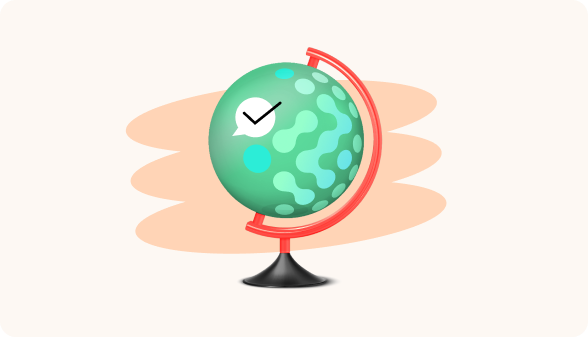
Creating, delivering, and managing language courses online can be a daunting task. Fortunately, there are now many tools that can help both language teachers and learners achieve meaningful and impactful educational experiences.
To help navigate these options, we have curated a list of the five best LMS platforms for language teaching and learning, enabling teachers to craft exceptional learning journeys for their students.
When You Need an LMS for Language Teaching and Learning
- University language courses: If you teach a language as part of a university program, then an LMS will be essential. All universities are turning toward online education as an integral part of their services. LMSs are crucial for language learning, giving tutors a single place to manage, administer, and track students, while also allowing students to access learning materials independently.
- K-12 Language Programs: Many schools are adopting eLearning tools to enhance the student experience. When it comes to engaging younger students, a learning management system is a vital tool. Teachers and learners can share materials, create personalized learning paths, and keep all their analytics and data in a single place.
- Corporate language training: Running a language program in a corporate setting can be a huge challenge, so finding the right eLearning platform is essential. An LMS will give trainers and learners the benefit of centralized learning resources, with progress tracking, completion certificates, and more.
- Online language school: Learning a new language today represents an entirely new learning process. In the modern world, all online language learning requires a learning management system to be effective. A good eLearning platform will help teachers share materials and track students’ progress, but it will also give the learners a professional and exciting learning experience.
Benefits of an LMS for Language Learning
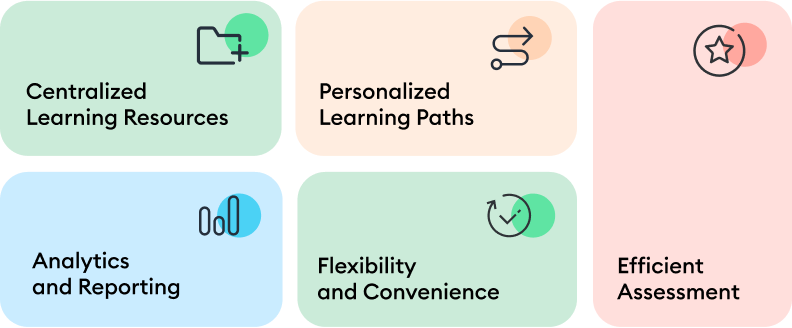
- Centralized Learning Resources: The first core feature of any LMS is serving as a content management system where teachers upload content that students can access.
- Personalized Learning Paths: A learning management system is a place where every user can have a bespoke role, experience, and pathway that reflect their unique learning needs.
- Efficient Assessment: Creating, delivering, completing, and analyzing assessments is a core function of an LMS.
- Analytics and Reporting: Depending on which platform is chosen, you can expect a wealth of useful data collected from users on how they interact with and complete the material.
- Flexibility and Convenience: An LMS is accessible anywhere and at any time on any device. This gives learners the flexibility to complete their learning assignments when it’s most convenient.
The Best LMS for Language Training and Learning
1. iSpring Learn
iSpring Learn is a learning management system that shines because of its simplified interface, a wealth of key features, and powerful reporting capabilities. First and foremost, iSpring Learn is easy to use for both teachers and students. And, as a multi-language LMS, it’s accessible to learners all over the world. Regardless of your experience with software, you’ll find everything you need easily, which makes this platform a great tool.
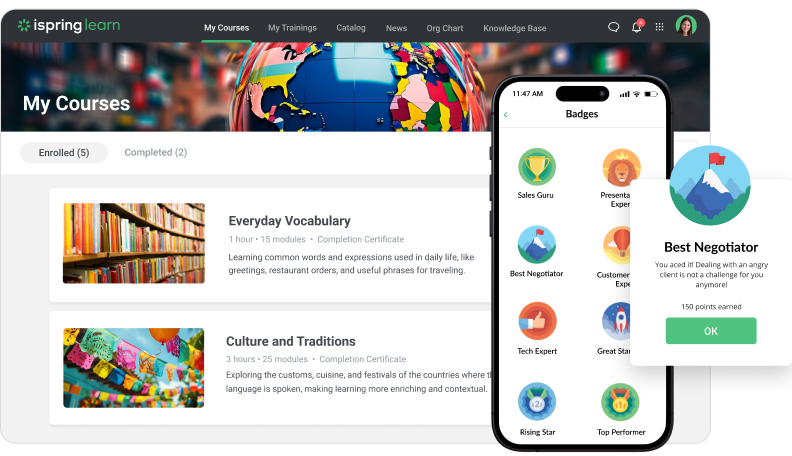
Despite being very simple and minimalist, Spring Learn is packed full of all the features you’d expect from an LMS for language learning. You can upload all of your learning resources, from interactive courses and video lessons to PDF files and Word documents, and assign them to your students. You can also organize learners into groups and track their feedback, progress, and learning outcomes with ease.
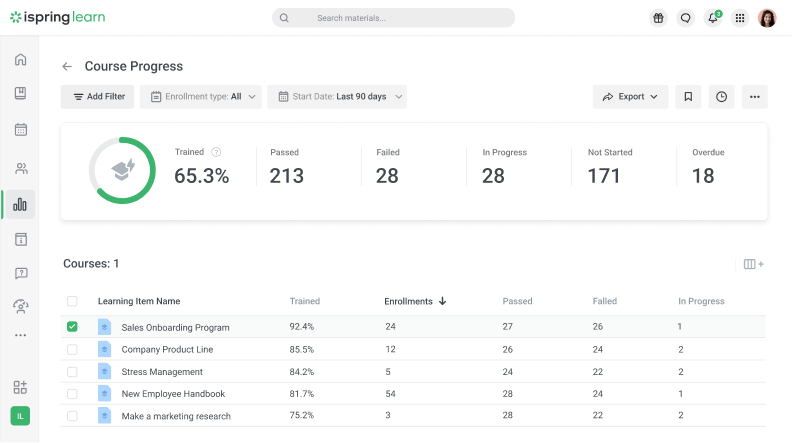
iSpring Learn comes with iSpring Suite, a powerful authoring tool that allows you to create impactful interactive courses. The LMS is also highly scalable and will keep up with your needs, no matter how your teaching career grows. One of the standout features of iSpring Learn is its exceptional user support. Any issues you face will be quickly resolved, so you can focus on teaching without interruptions.
Reasons to BuY
- Easy to navigate for both teachers and students
- Multiple content upload options, including SCORM
- Powerful analytics and reporting capabilities
- Comes with a course authoring tool
- Seamless learning experience across multiple devices
- Reliable 24/7 tech support
Reasons to AvoiD
- As a premium platform, access is somewhat expensive
Pricing
$6.64 per user/month (100 users)
$4.10 per user/month (300 users)
$3.75 per user/month (500 users)
A 30-day free trial is available.
Best for
Teachers who manage large groups of students and ambitious language-learning projects.
2. Google Classroom
Google Classroom is a great option for teachers who are considering a learning management system to teach their language courses. Most of what the platform offers is free, but some extra features are available in the premium version.
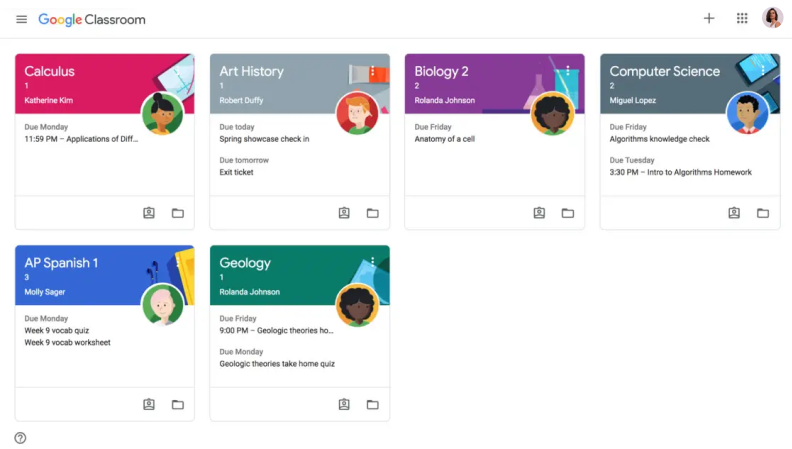
Google’s workspace is full of handy tools that make teaching online much easier, and Classroom brings them all together and more. Think of the platform as a single space for communication, sharing, and organization. It serves as a single point of access for both teachers and learners, where you can upload materials, schedule lessons, assign homework, receive feedback, and manage progress — all in one place.

While the base version of the platform provides these functionalities, they are implemented at a rather basic level. Communication with students is facilitated through Gmail and Google Meet, and scheduling is managed via Google Calendar. You can create quizzes and surveys with Google Forms and lesson materials with Google Docs and Google Slides. However, the platform does not support the upload of interactive course material like SCORM files, nor does it provide detailed reporting. Although you can post announcements in your classroom feed and allow learners to comment, there’s no convenient messaging option for students.
Reasons to Buy
- Provides basic functionalities at no cost
- Integrates with all Google Workspace tools
- Intuitive and easy to navigate
- Enables real-time collaboration on documents and projects
- Serves as a centralized hub
Reasons to Avoid
- Has a more basic functionality than other platforms
- Does not support SCORM files
Pricing
Free to use.
Premium versions are available, with pricing provided upon request.
Best for
Teachers who want to explore LMS functionality without making a financial investment
3. Moodle
Moodle is an open-source LMS designed to help teachers create and deliver high-quality learning experiences around the world. As an open-source technology, Moodle is free to download and use and is fully customizable, flexible, and scalable. However, leveraging Moodle to its full potential as an LMS for language learning often requires a specialized skill set that other LMS platforms may not demand.
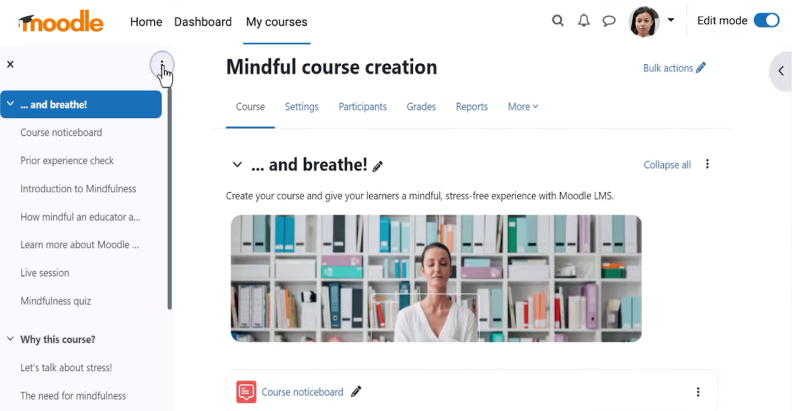
Fortunately, Moodle Certified Partners can design custom LMS solutions from scratch for you, eliminating the need for you to develop these skills. While this service incurs additional costs, it can be one of the most effective ways to create a tailored learning management system with all the features you’ll need to teach languages online. You can include diverse course content and engaging video tutorials, foster social learning with discussion boards, and cater to different proficiency levels with Moodle’s tools.
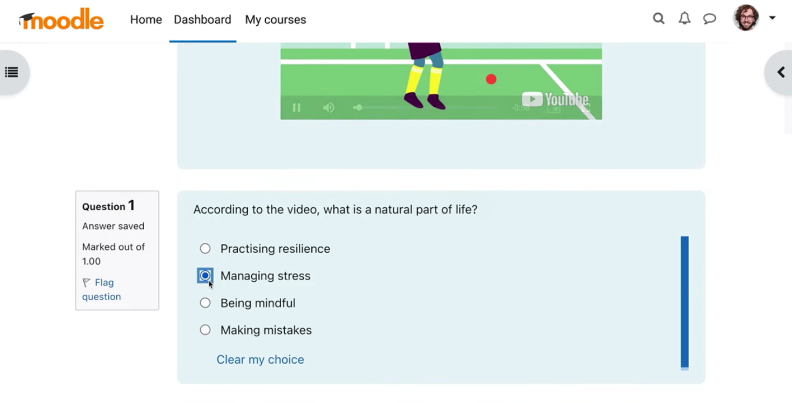
Moodle’s strengths lie in its customizability and its vast selection of plug-ins, which enable the creation of a truly unique online language program. If other learning management systems don’t meet your specific needs, investing time and/or money into Moodle’s unique technology might be a solution.
Reasons to Buy
- Open-source and free
- Offers extensive customization options
- Access to a vast selection of plug-ins
- Supports diverse course formats and content types
- Strong global community support
Reasons to Avoid
- Requires a significant investment of time and advanced skills to master
Pricing
Free to use.
Moodle Certified Partners provide services at diverse pricing levels.
Best for
Teachers who want to create bespoke learning experiences.
4. Canvas
The Canvas LMS is potentially the best LMS for language learning – primarily designed for higher education and schools. It’s also a solid choice for language teaching and learning. Canvas is a comprehensive web-based LMS with numerous polished features that language teachers will appreciate.
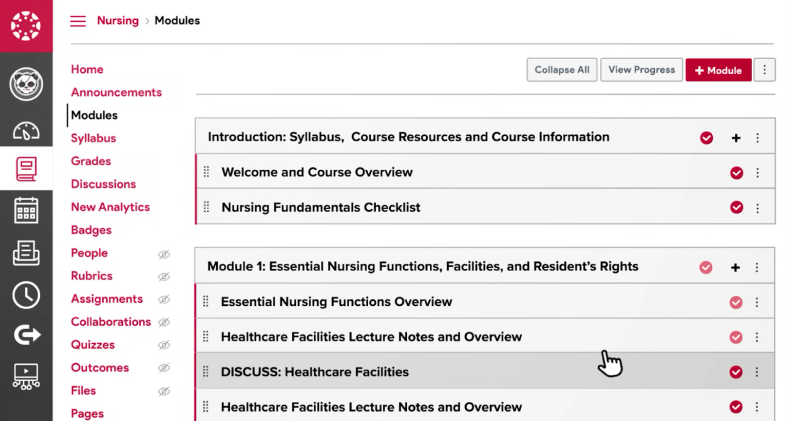
The platform offers both course creation and management tools, making it ideal for those seeking a learning management system with built-in authoring capabilities to create interactive courses and video modules. Besides, Canvas provides effective feedback, statistics, and analytics tools, along with standard internal communication features.
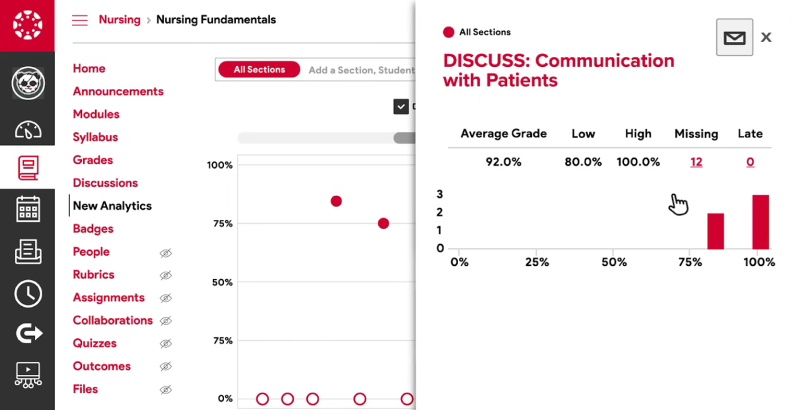
One huge benefit of the Canvas LMS for teaching languages is its support for blended learning. Language learners benefit from interaction with teachers and peers, and Canvas facilitates this by allowing educators to combine engaging student-led materials with virtual classrooms and social learning.
Reasons to Buy
- Intuitive and easy-to-navigate interface
- Comprehensive course management
- Built-in tool for creating interactive courses
- Integrated communication tools
- Blended learning support
Reasons to Avoid
- Limited reporting options and customization capabilities
Pricing
Pricing and a free demo are available upon request
Best for
Educators aiming to develop large-scale learning projects
5. TalentLMS
TalentLMS is another platform designed for larger institutions but can be a great solution as an LMS for language learning, whether on a smaller or larger scale. This platform offers features such as AI-powered content creation, video integration, and interactive resources for engaging learners. Besides, it includes essential LMS features like quizzes, tests, assignments, and a suite of reporting tools for in-depth analytics.
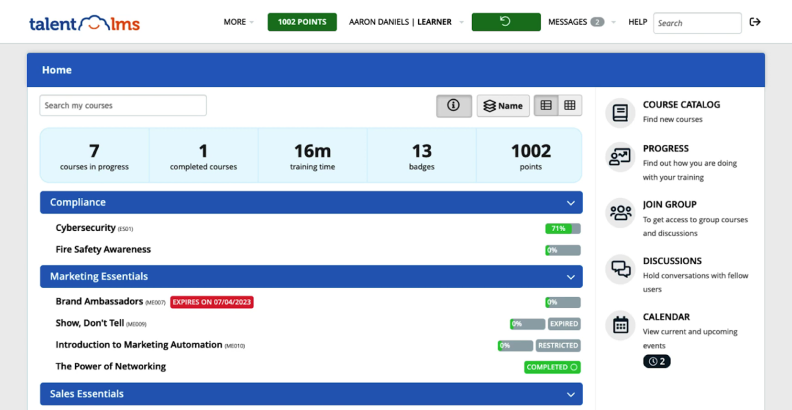
One of TalentLMS’ standout features is its user-friendly interface, which benefits both teachers and learners. The app is accessible across various devices, supporting learning on the go, and is localized in over 30 languages and compatible with any time zone. The platform also supports live sessions, which are essential for interactive lessons.

Overall, TalentLMS is a great option because it ticks all the boxes of an LMS: authoring, management, assessment, and progress tracking, all within an excellent user interface. TalentLMS keeps the learner engaged and on track so you can focus on creating your course content for language learning.
Reasons to Buy
- Simple user interface and all-round features
- Blended learning support
- AI-powered course creation
- Works across multiple devices
- Robust reporting tools for tracking progress
Reasons to Avoid
- The cost may outweigh the benefits for some projects.
Pricing
Pricing starts at $69/month.
Best for
Educators looking to launch comprehensive learning programs.
Which LMS Platform Is the Best for Language Learning?
There is no one-size-fits-all answer to this question. The ideal platform depends on your specific needs as a teacher and what your students will most benefit from.
Google Classroom is an excellent starting point, especially for new teachers, as you can get to grips with the basic principles of a learning management system free of charge before considering other solutions.
iSpring Learn is also a fantastic LMS for language teaching and learning, known for its exceptional ease of use for both students and teachers. It offers a wealth of useful features, making it a robust choice for comprehensive learning management.
